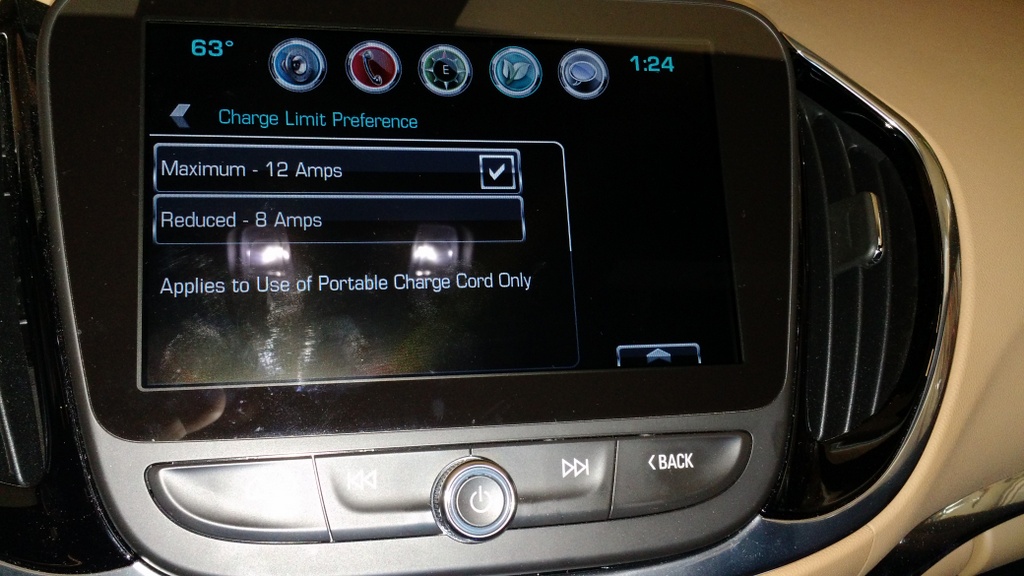
Building a Chevy Volt Charging Adapter
(updated 4/28/21)
My 2016 Chevy Volt came with a 120 volt "charger" (EVSE) that plugs into any standard 120 volt receptacle. When using the EVSE, the owner can select either 8 amps or 12 amps for charging his Volt. 12 amps is faster, and can charge a fully depleted battery in about 13 hours. Charging at 8 amps takes about 19 hours. If your 120 volt circuit can handle the 12 amp rate, most owners choose this option. But it's a bit of a pain, since you must override the default 8 amp setting in the dash control panel before you start the charging:

But it turns out that Volt EVSE (GM part number 24277224) can also be operated at 240 volts, allowing you to charge at TWICE the charging rate! Wow! That's only about 6 hours to charge a fully depleted battery. That's getting closer to a charge rate of a Level 2 charger, which also charges at 240 volts but at a higher amperage rate.
We visit our son a lot, but he doesn't have a Level 2 EVSE at his house. But he DOES have a 240 volt receptacle in his garage for operating his power tools. It's likely that many Chevy Volt owners would like to take advantage of the 240 volt capability of the portable Volt charger.
The problem is that the Volt charger doesn't have the right plug to allow it to connect to 240 volts.
So we need an adapter to be able to plug in the standard charger to a 240 volt receptacle. These receptacles come in a number of various configurations, depending on the circuit in your garage. Here's a receptacle for a 20 amp 240 volt circuit:
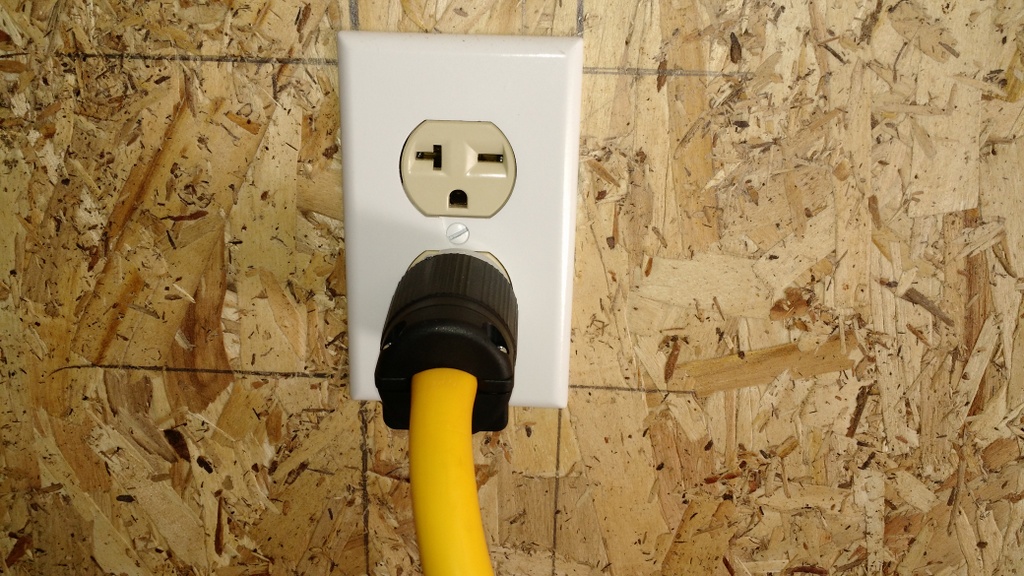
You might have a 30 amp receptacle (common for clothes dryers and water heaters) or perhaps a 50 amp receptacle for a welder, but you can use ANY 240 volt receptacle with the correct plug and wiring. Do a Google search for "250 volt receptable photos" and you'll see how many there are. Here are a few:
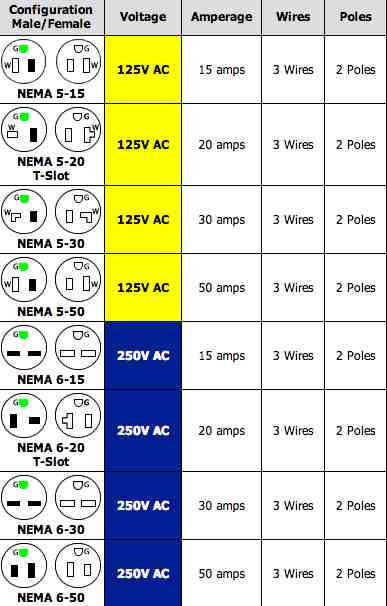
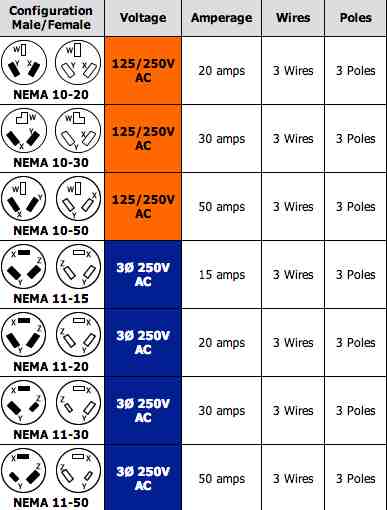
Here is a link to more details about NEMA connectors:
https://en.wikipedia.org/wiki/NEMA_connector
![]() Update 8/2/19
Update 8/2/19
I just found on Amazon a new product that eliminates the need to build your own adapter:
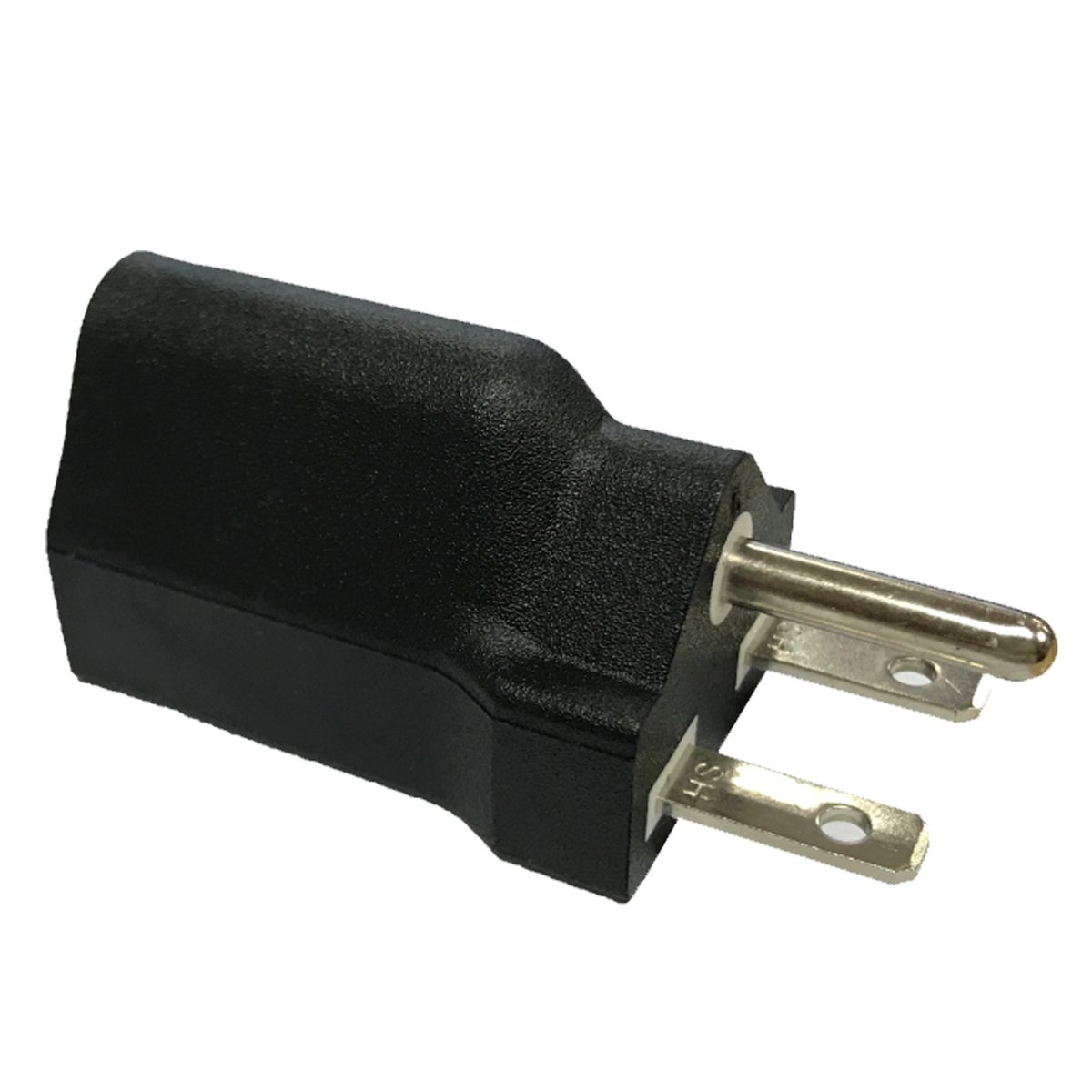
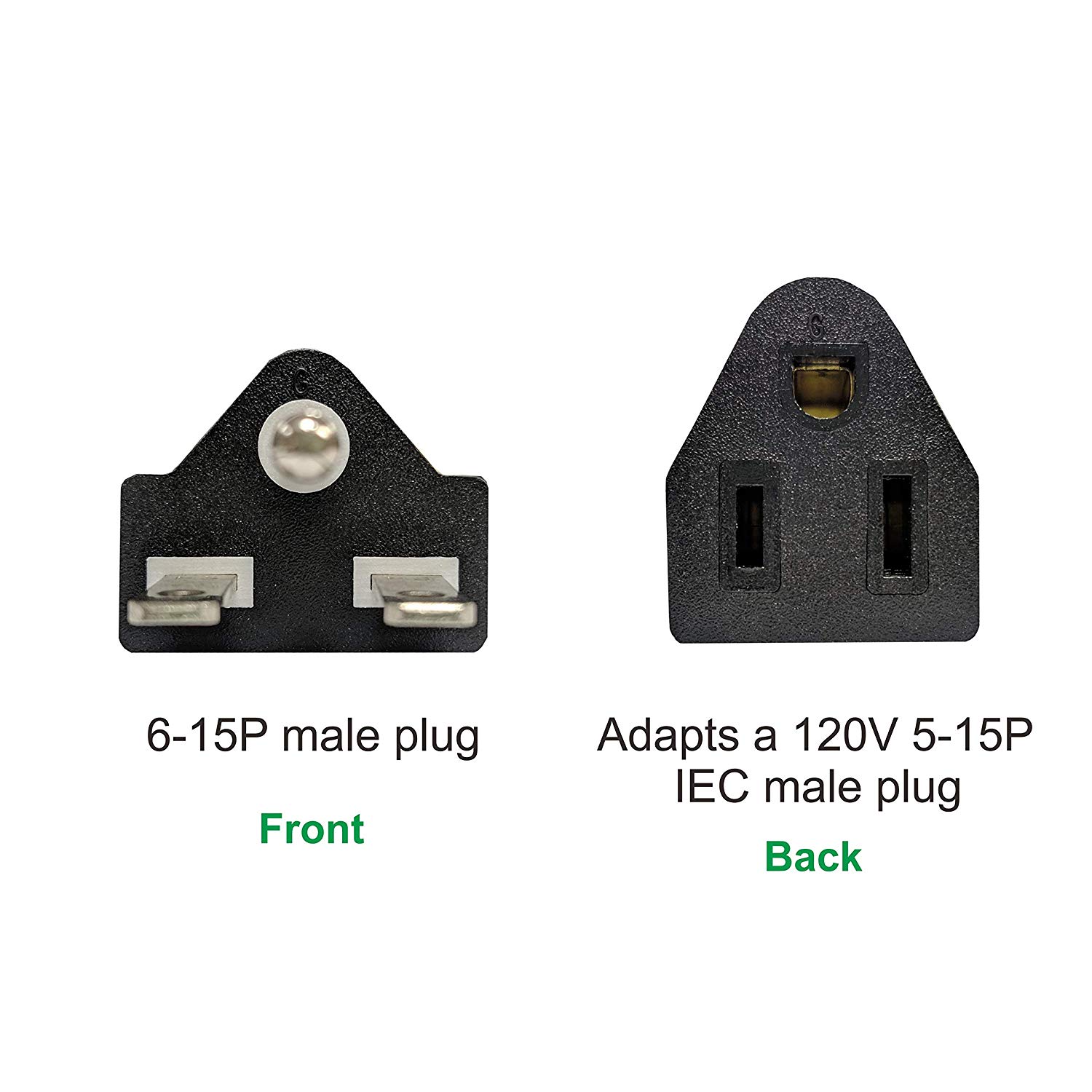
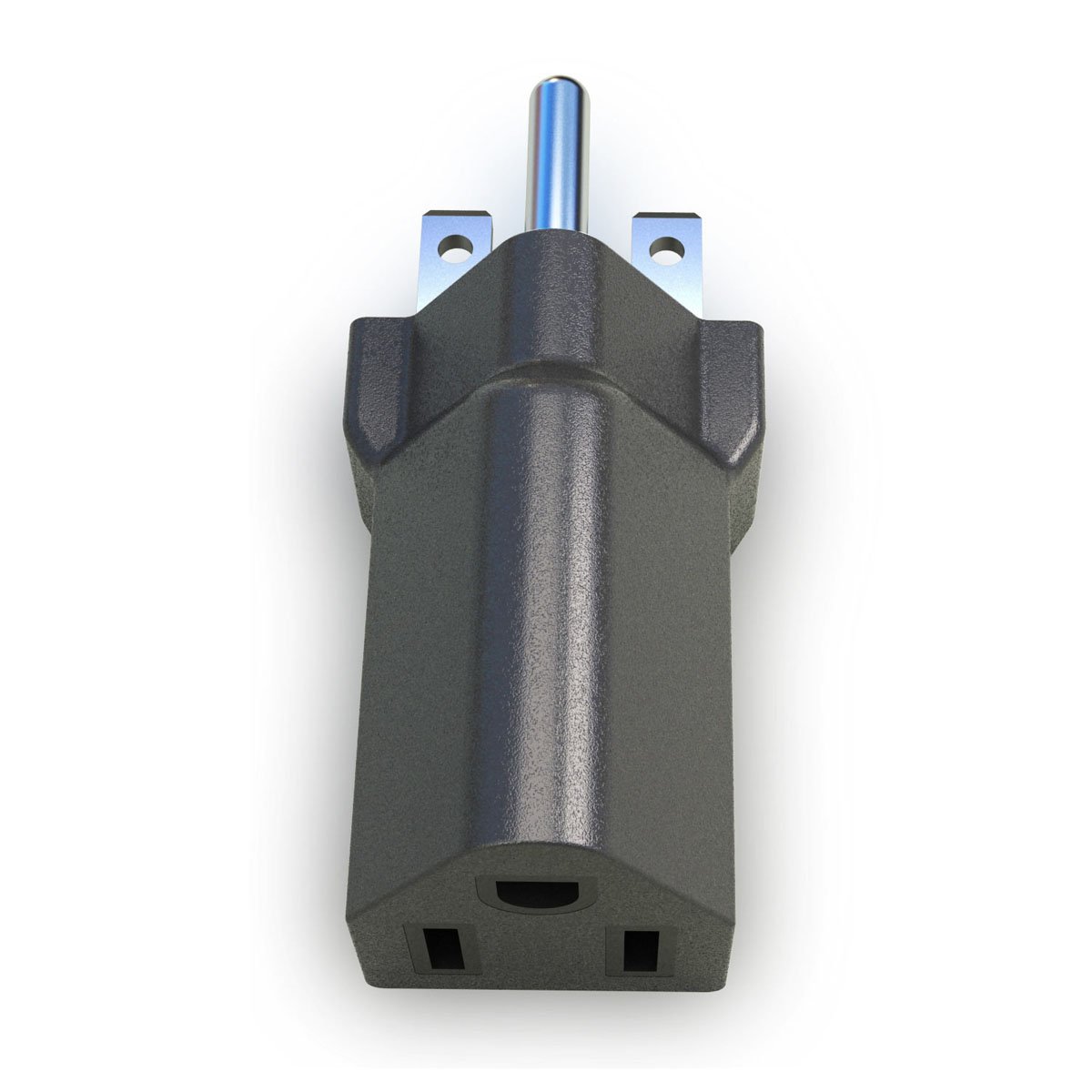
This adapter is less than $8 on Amazon. It's called a BloomGrow 110v/120v to 220v/240v Plug Adapter.
I bought two of them for $12 bucks so I could give one to my son, who is also a Volt owner.
Here it is on my Volt EVSE:
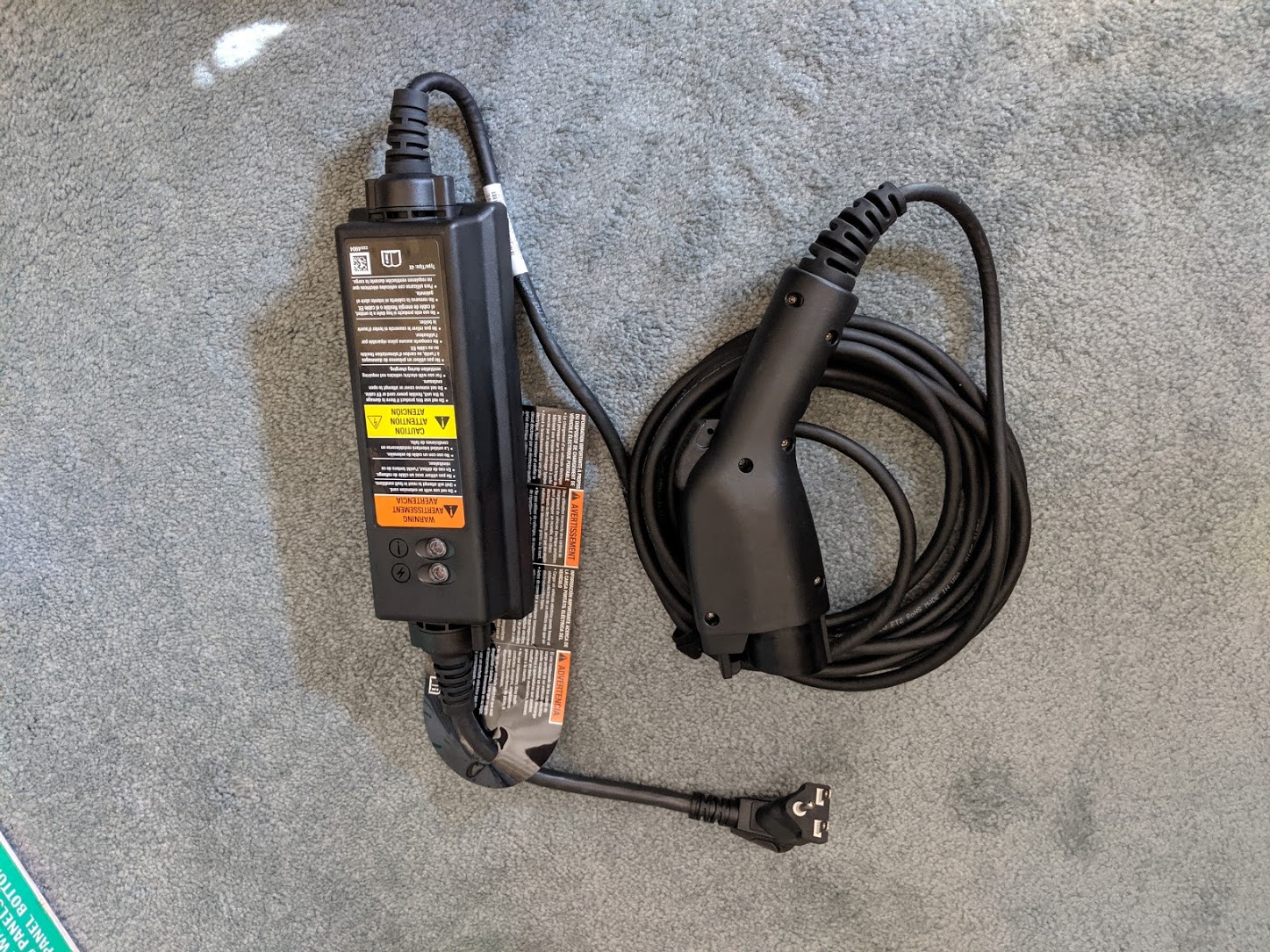
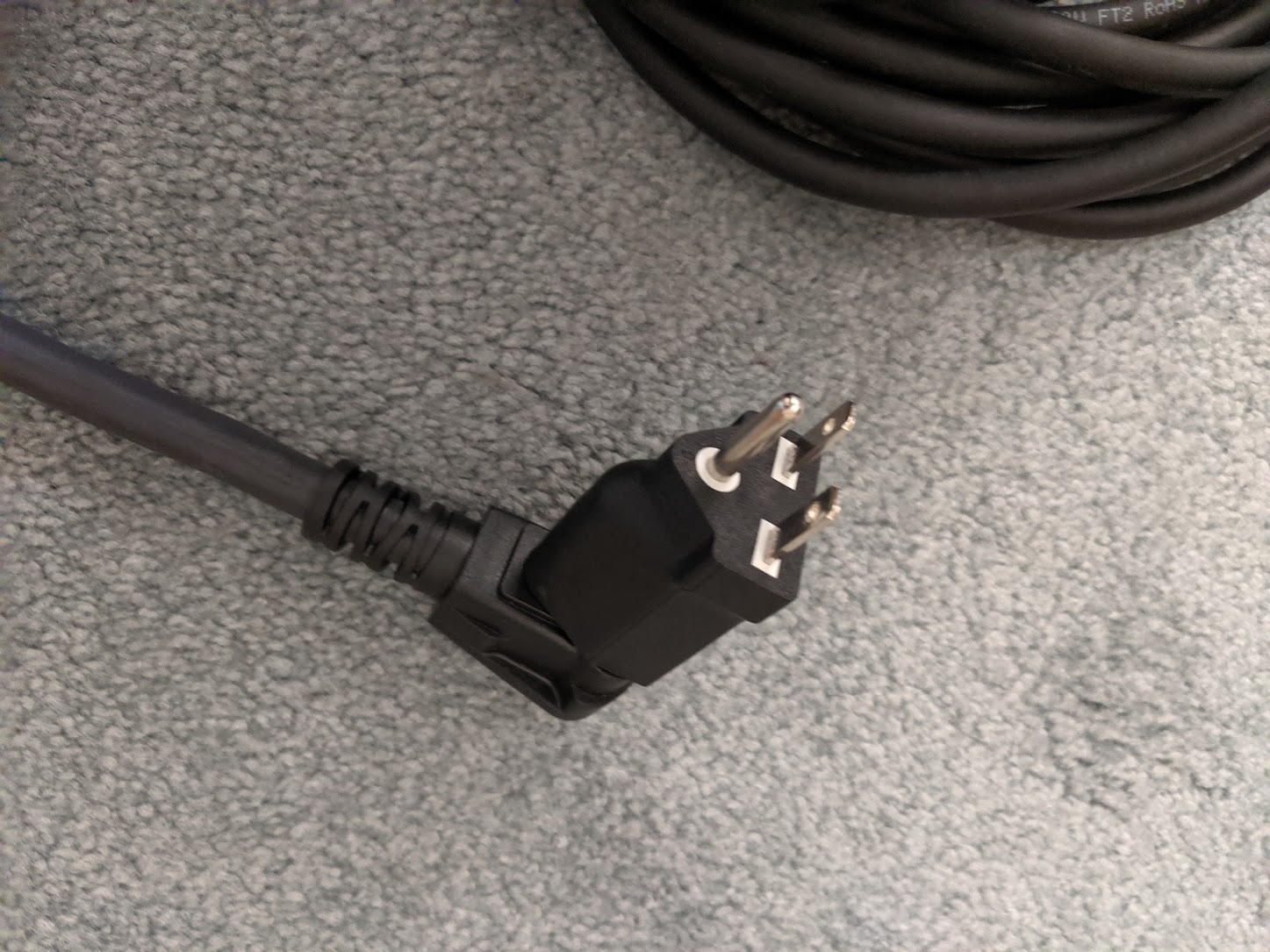
and plugged into my 240 volt receptable:
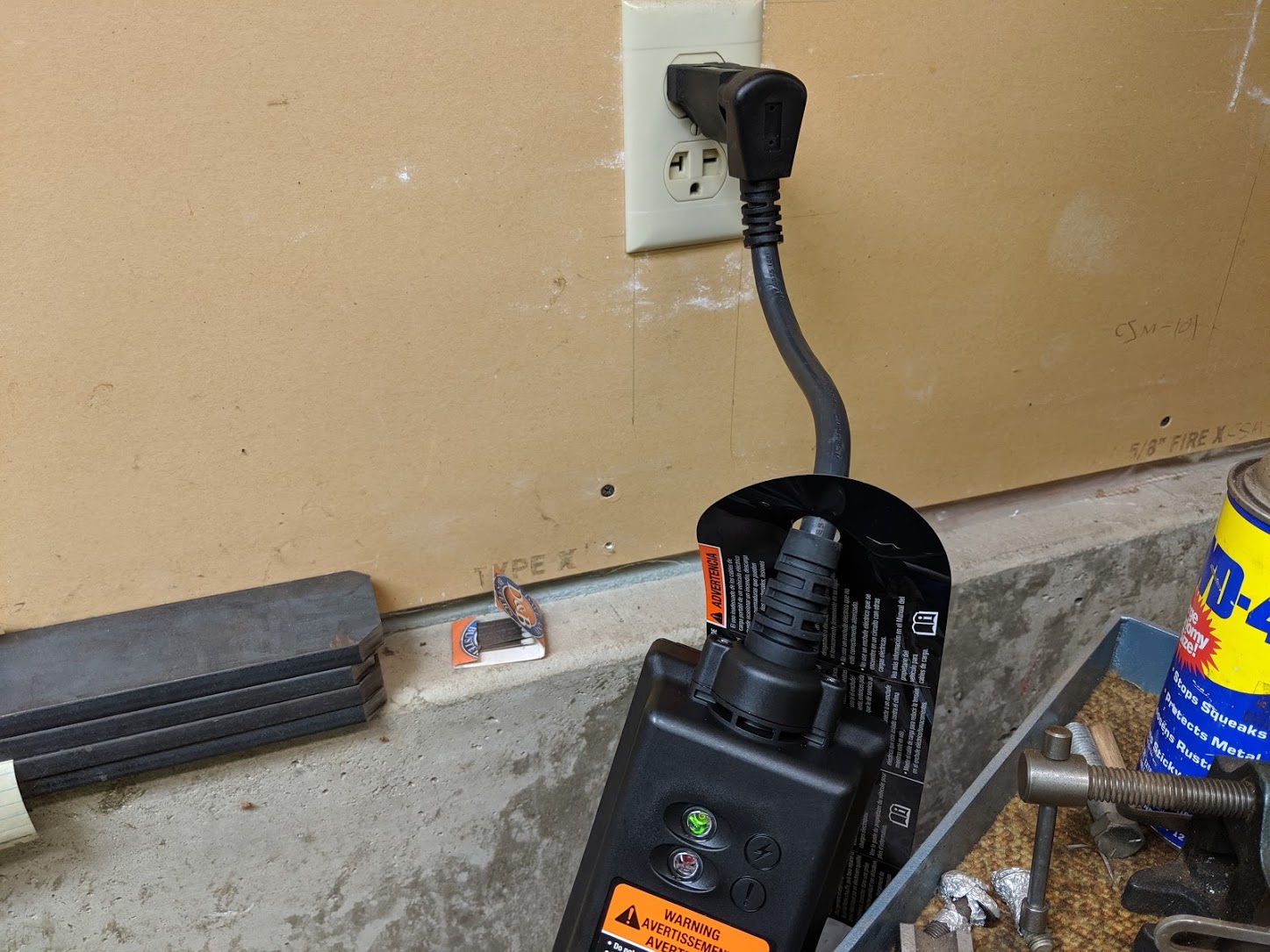
This is definitely the way to go if you have a NEMA 6-15 or 6-20 receptacle.
Update 4/28/21
The above Bloomgrow adapter can also be used with other 240 volt adapters if you have a different 240 volt receptacle. For example, here's one for a 14-50 receptacle:
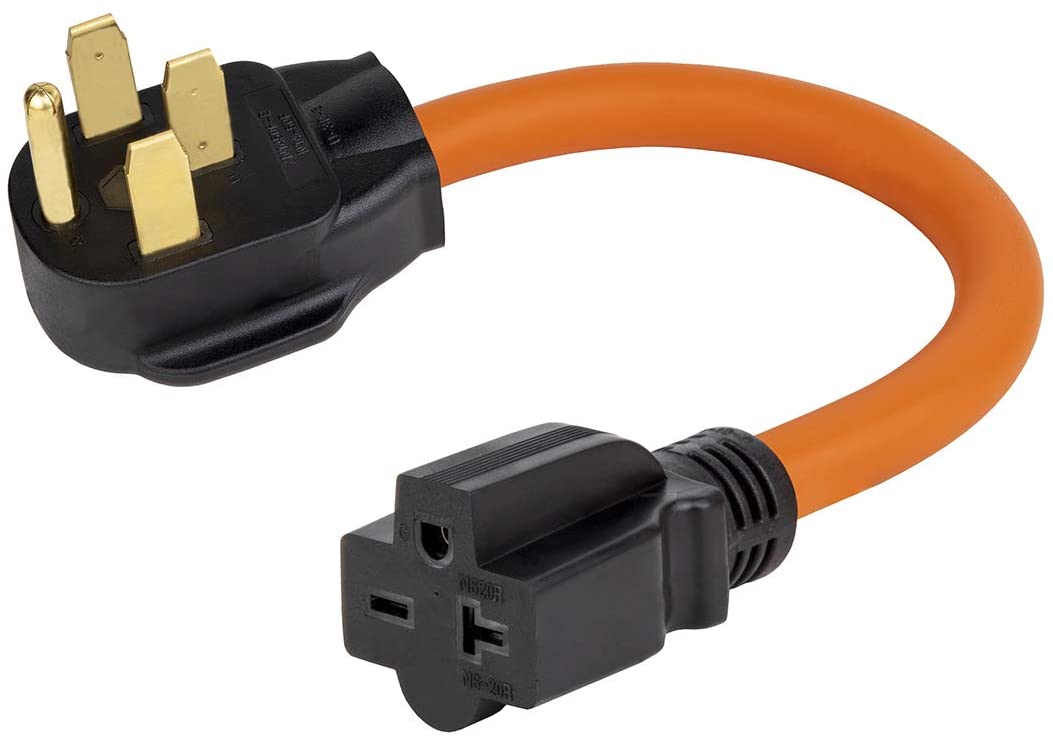
These are more common because they adapt 240 volts to 240 volts, but just a different sized receptacle. Amazon has lots of them and they aren't too expensive.
Update 6/16/18
If you happen to have a NEMA 6-50 welder outlet receptacle, a Volt forum member found an adapter already available on amazon. Do an amazon search for "ALEKO WAC105015". It's only $11 bucks! And the model WAC125015 is less than $9 bucks. It has 12/3 wiring instead of the heavier 10/3 wiring, but that's plenty big for 12 amps.
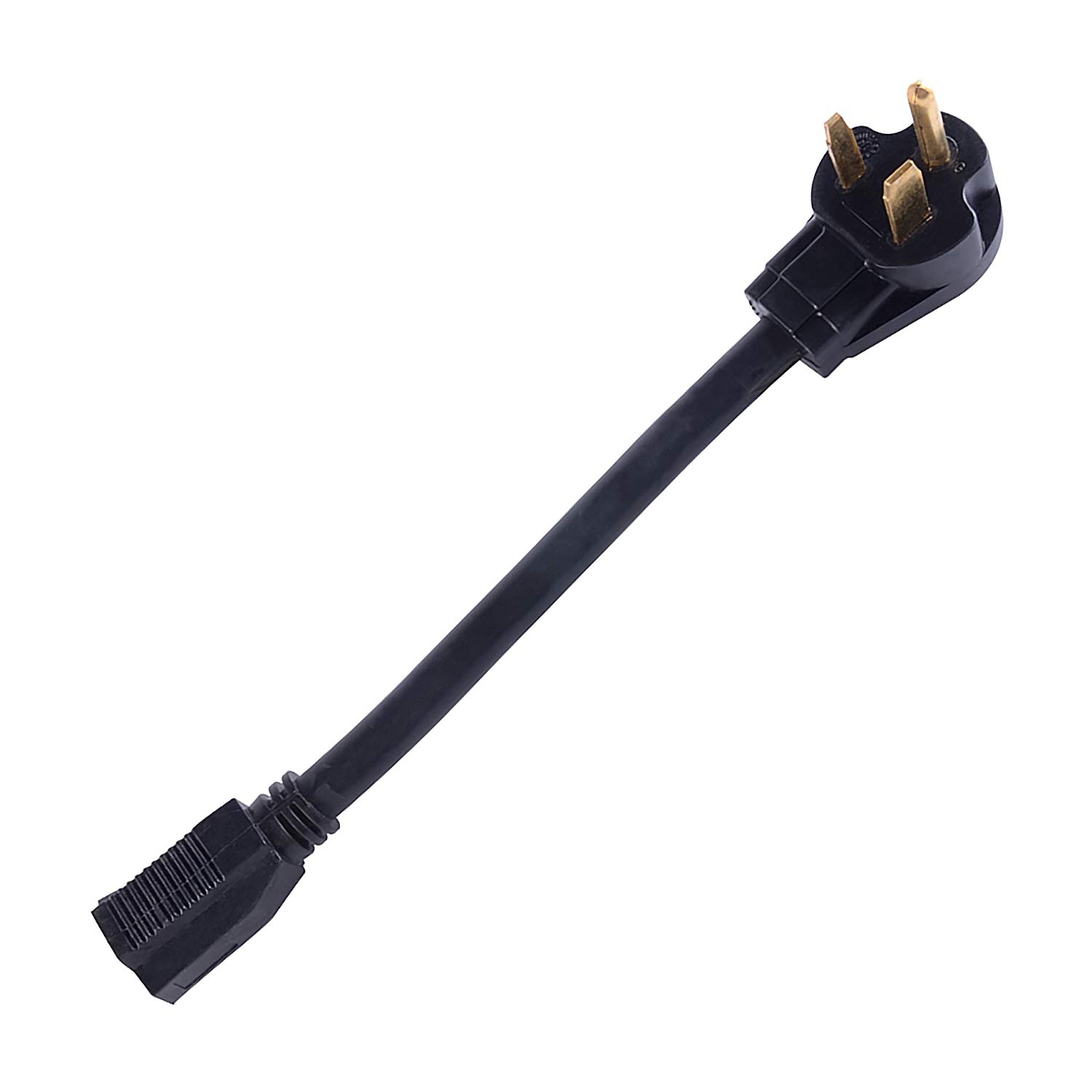
Update 7/21/18
Other Volt ESVE part numbers will work too. Besides the 24277224, the 24280118, the 24288872, and the 24291478 are compatible with a 240 volt input.
Update 12/18/18
Per the Volt Forum, Post #1029 on the L1/L2 thread advises that the 23254904 and 23254905 are also compatible with these 240 volt adapters.
If you don't have a receptacle in your garage already, you can wire one in. Even the lowest amperage rating of 15 amps is suitable for the Chevy Volt, since the EVSE is only capable of accepting 12 amps.
Note that most 240 volt receptacles have three conductors - two hot terminals and a ground. Some have four terminals, which have a neutral conductor as well. The Volt adapter needs only the two hot and ground terminals, so any receptacle will work - just leave off the neutral wire.
In my case, I just built a new storage garage, and I wired in lots of standard 120 volt receptacles and one 240 volt receptacle:
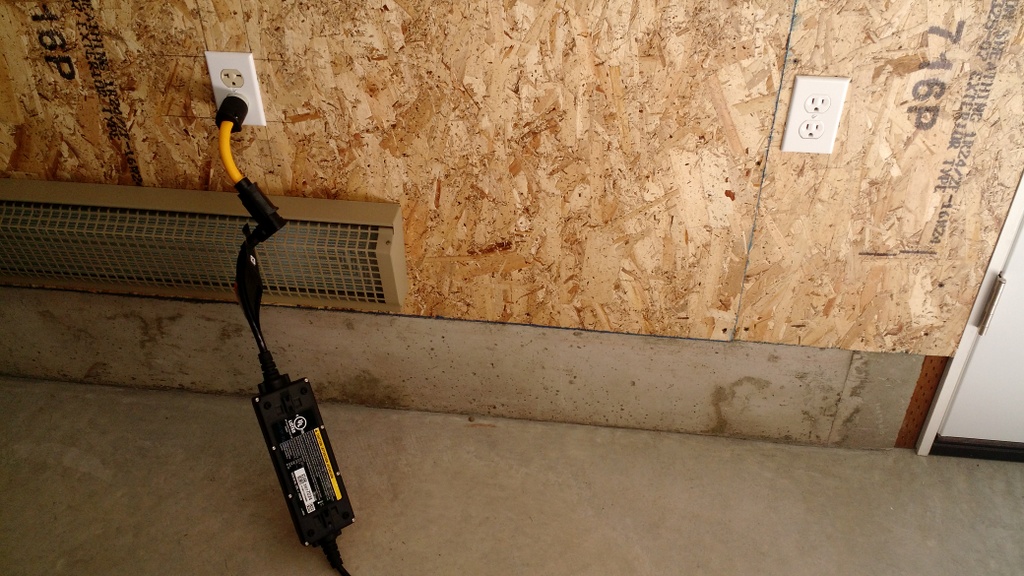
Here's the adapter I built:
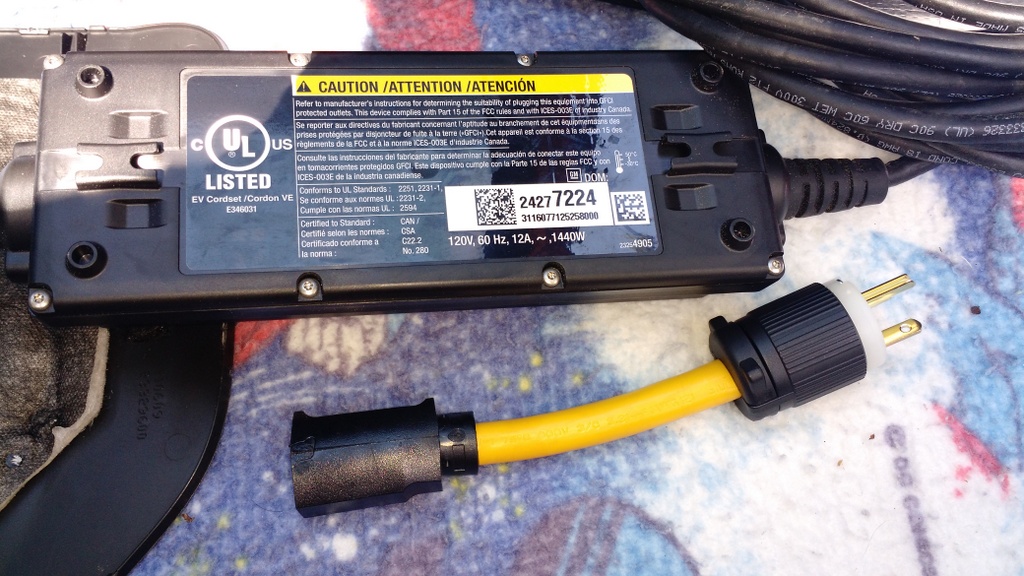
To start with I bought this from Amazon for about $12 bucks:
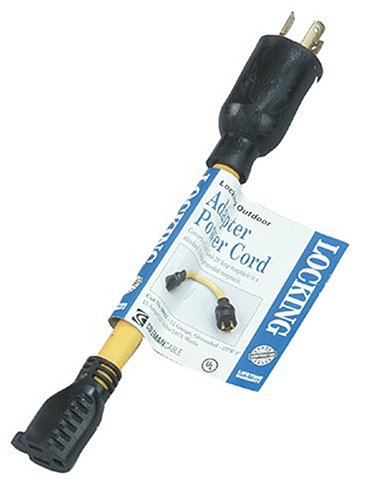
I bought the Coleman 09021 Generator Adapter, because it has a good heavy duty cable with a good quality molded 120 volt receptacle on one end. I cut off the other end.
I also bought this from Amazon for another $9 bucks:
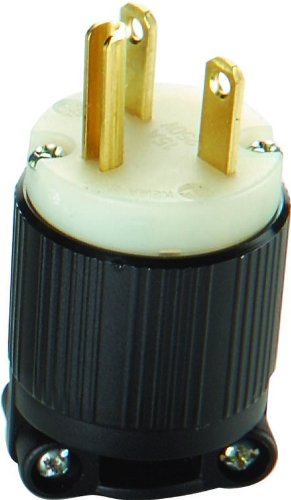
This is a Powertronics NEMA 6-15P 15 amp/250v plug. There are lots of other choices, but this one is a good quality plug with a decent price.
After cutting off the unusable end of the Coleman adapter, I cut back the yellow insulation and wired the three conductors to the plug. The black and white wires go to the two hot terminals and the green wire goes the green ground terminal:
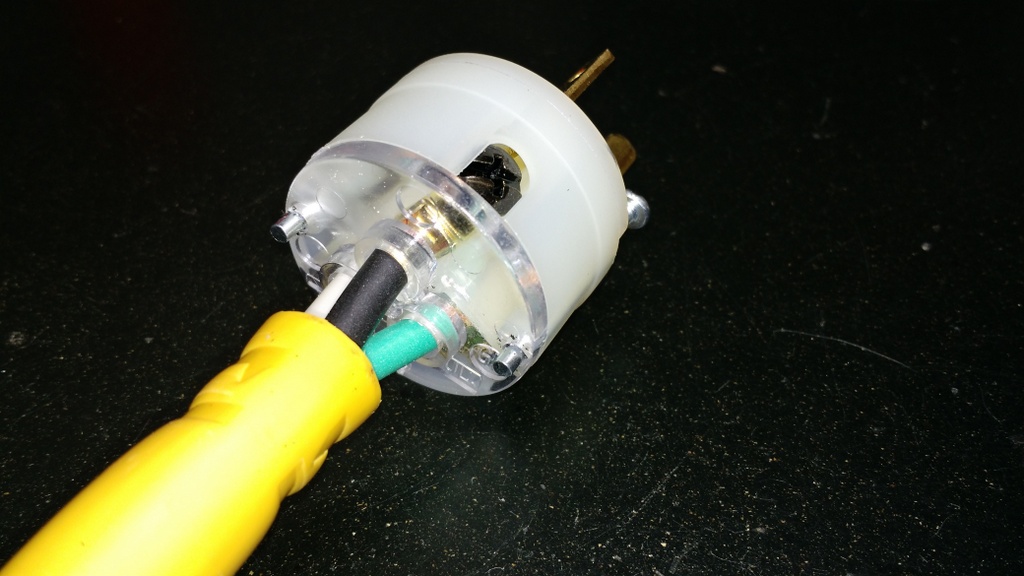
Simple instructions are included with the plug. Note the heavy yellow insulation:
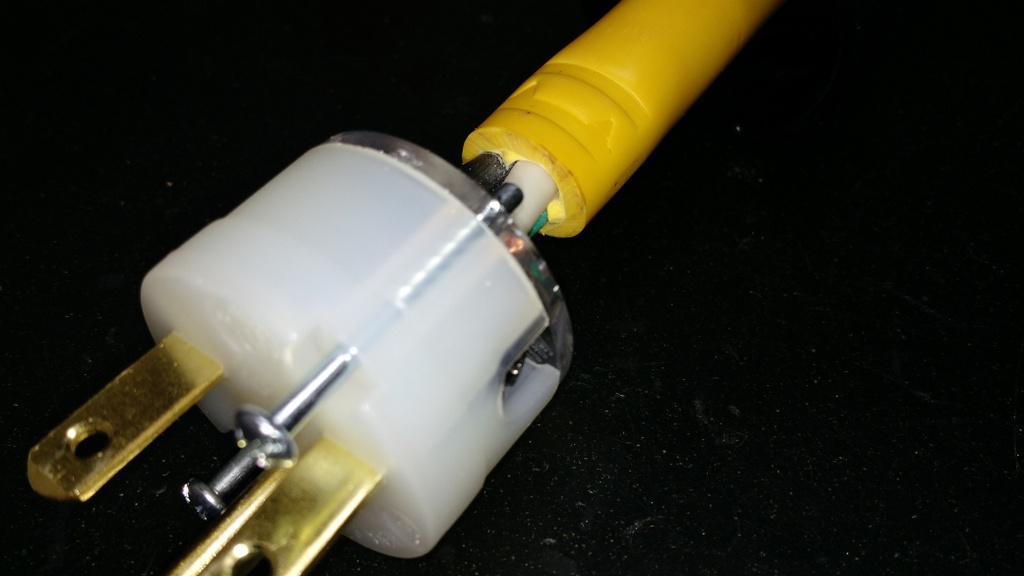
The above photos don't show the cap, which must be slid on the cable before wiring it:
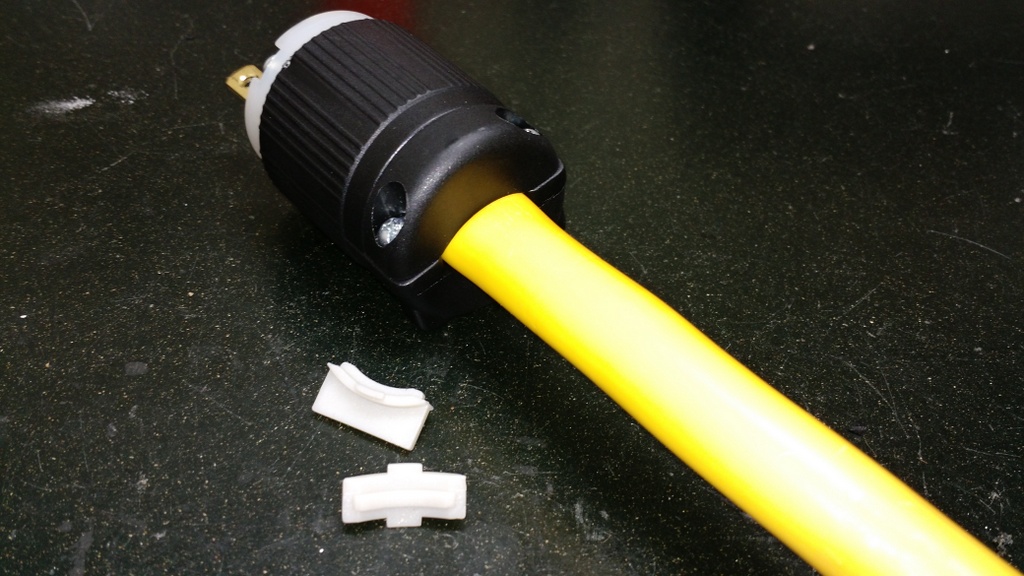
Note above that I didn't use the two spacers because the cable was so thick.
Here's the completed adapter:
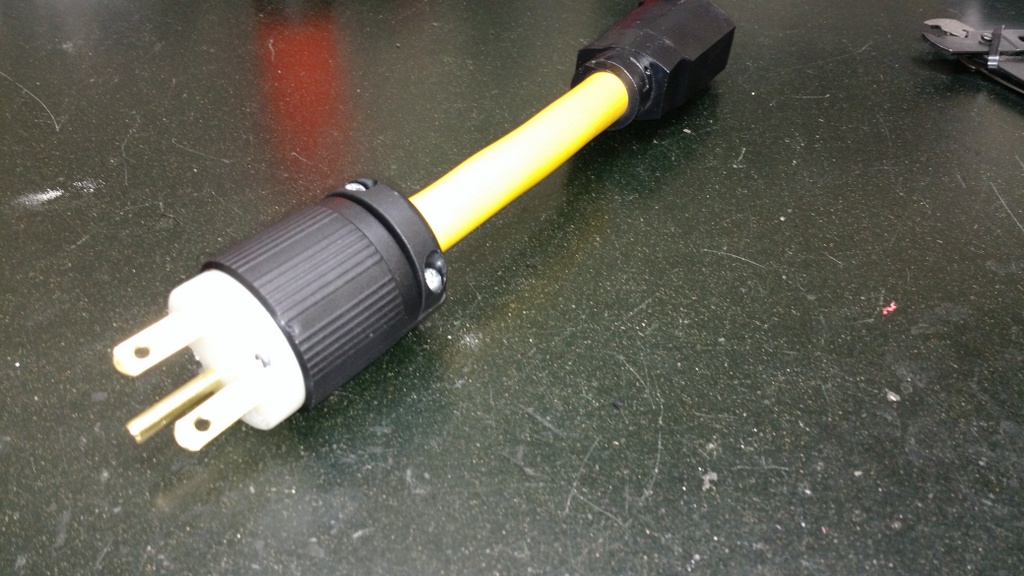
Now to try it out!
In my new garage, I supply 240 volt power to it through a subpanel in my workshop. To monitor power usage I wired in two volt/amp meters, one on each 120 volt leg of the garage wiring:
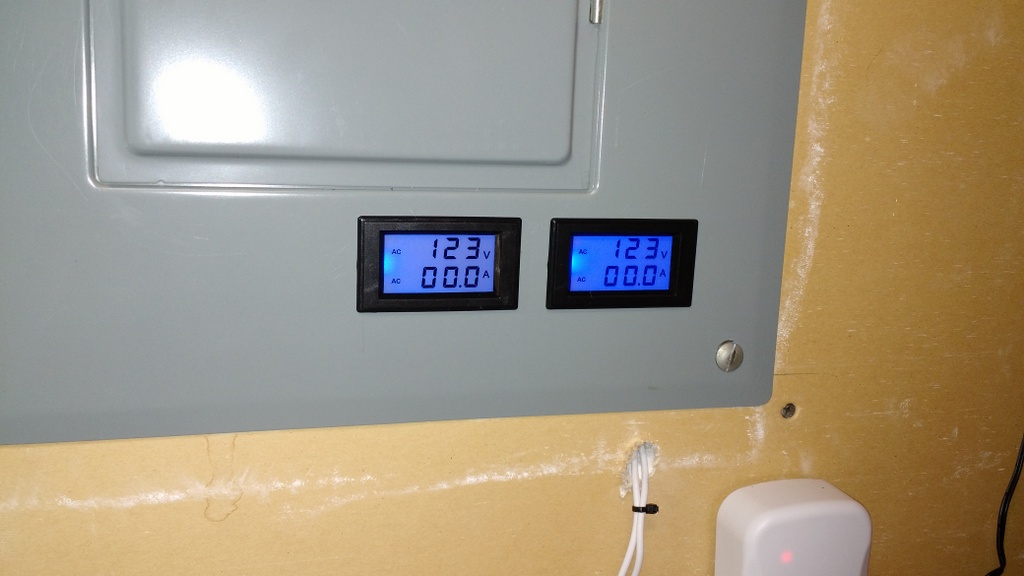
With nothing turned on in the garage, the above photo shows voltage to the garage and no current being used.
Next, I plugged in the Volt charger to one of the standard 120v receptacles:
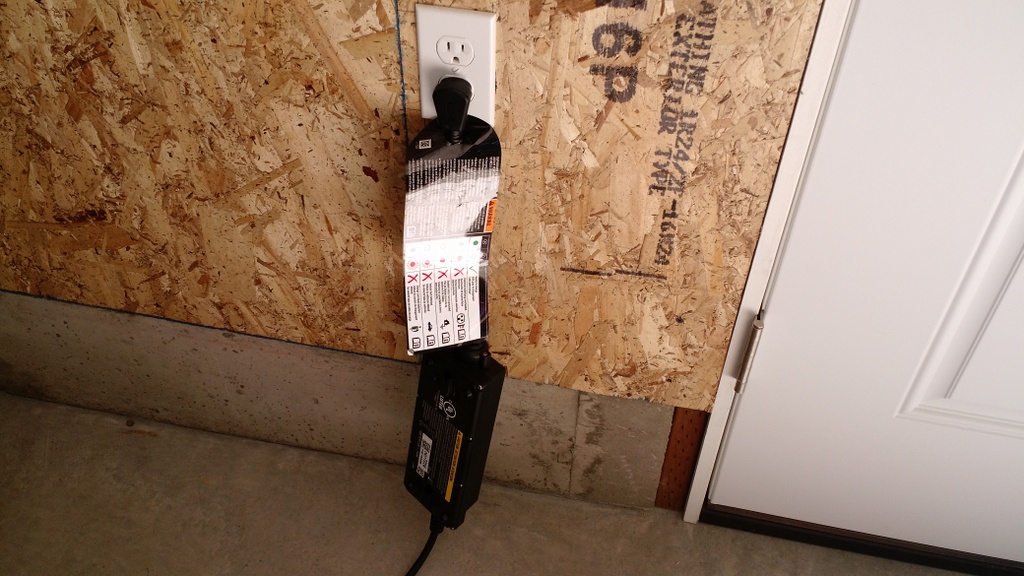
With a default setting in the Volt control panel of 8 amps, here is the current usage:
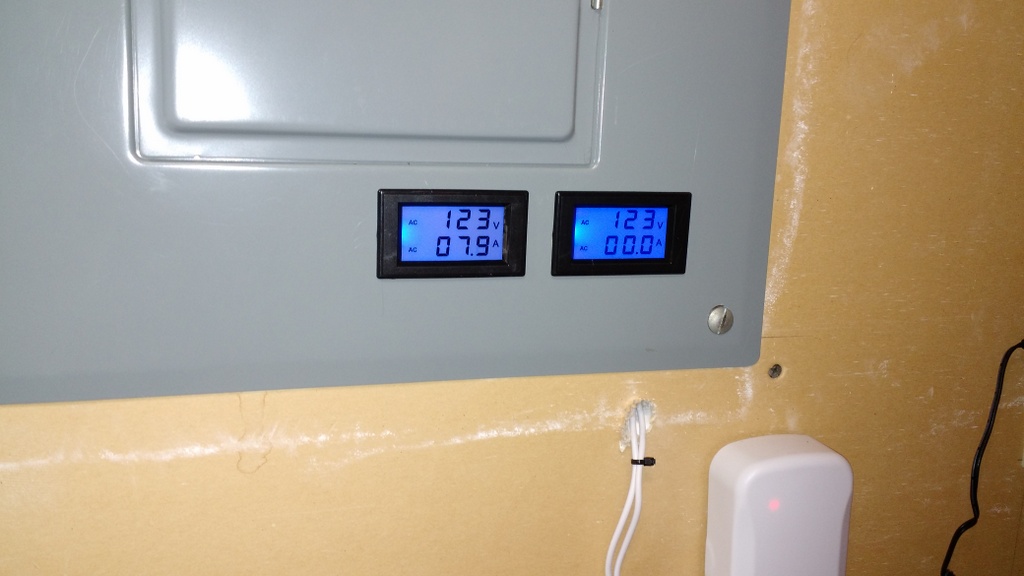
I then set the charging rate to 12 amps:
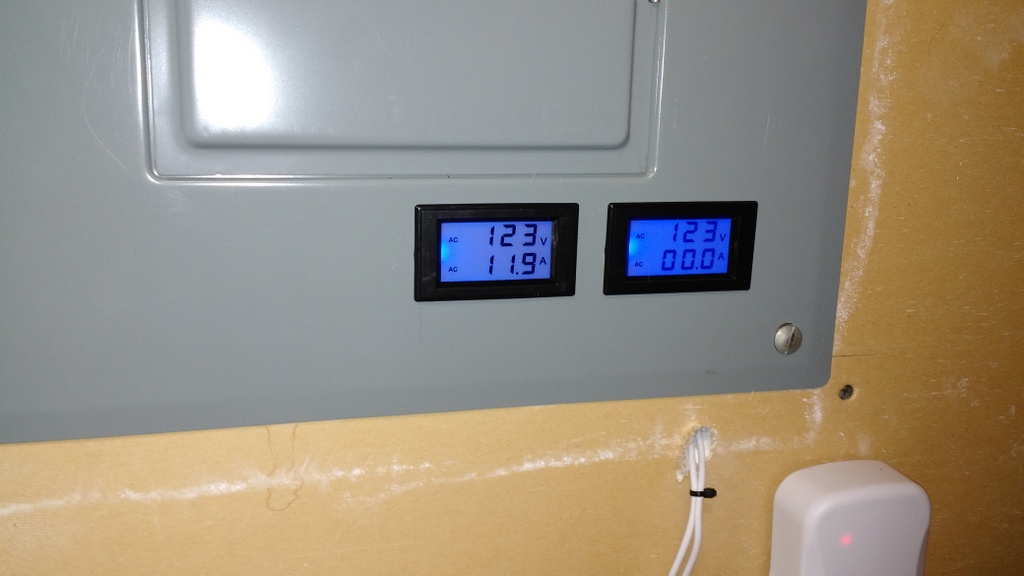
Next, I plugged in the charger with the new adapter to my 240 volt receptacle:
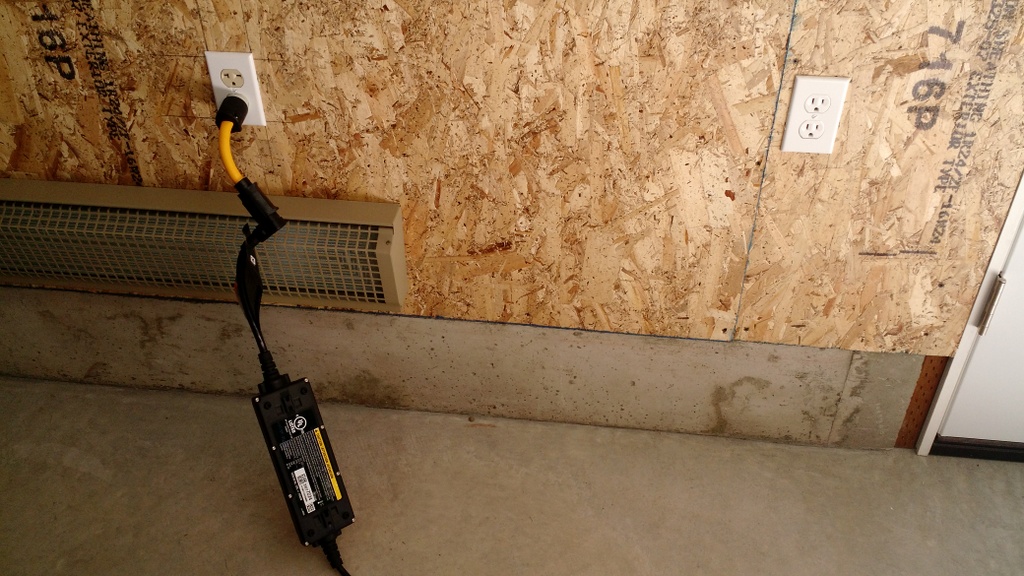
Here's the current usage:
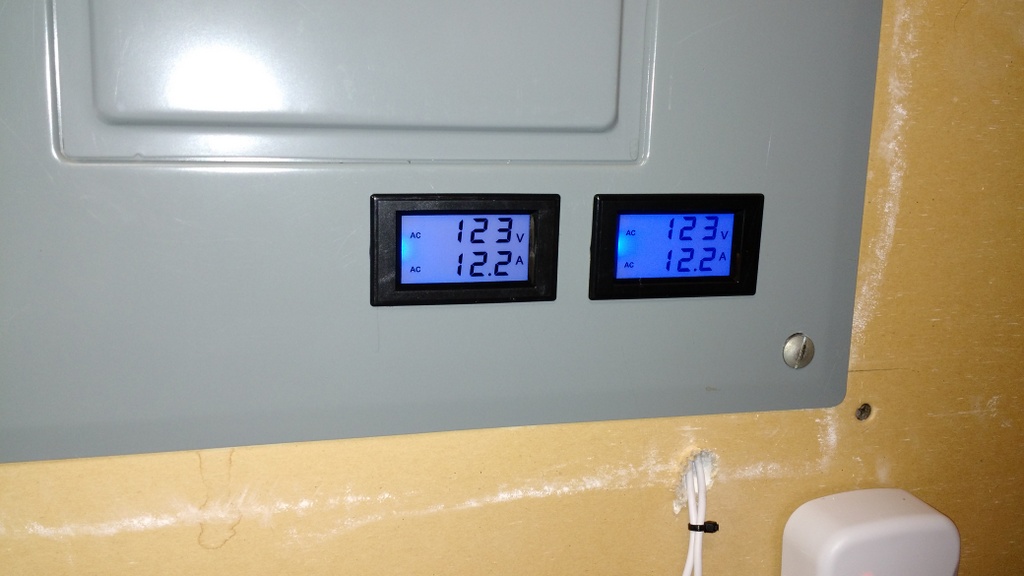
When I was testing this setup, my Volt was almost fully charged. After a few minutes of charging at 12 amps (240 volts), I noticed that the current started tapering off:
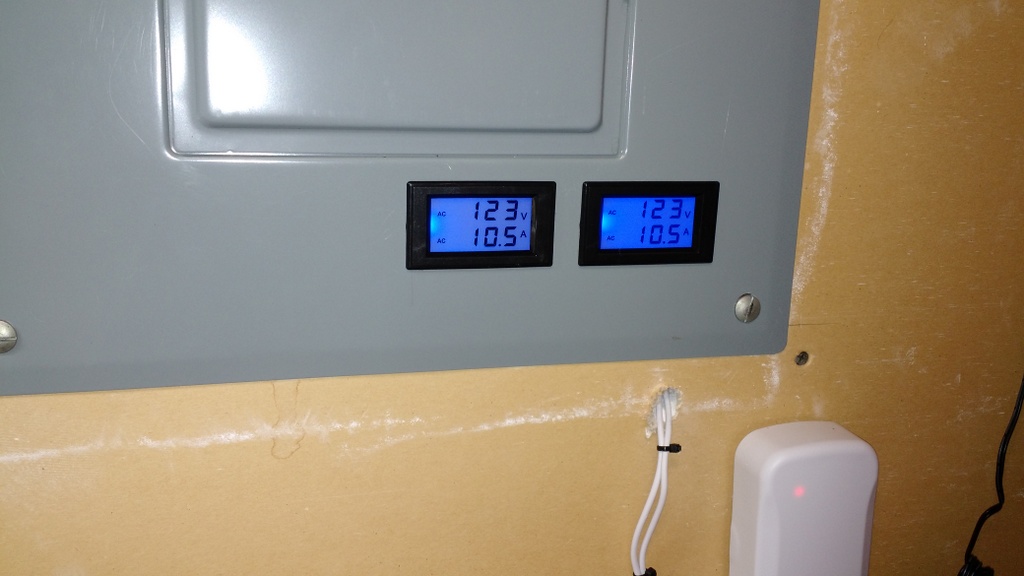
In a few more minutes it was down to 8 amps:
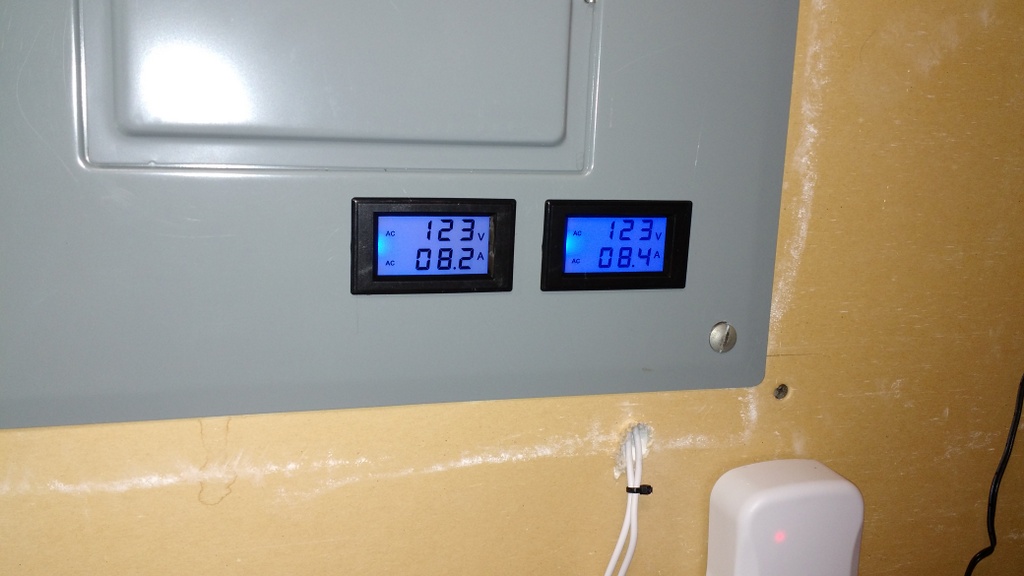
Then 5 amps:
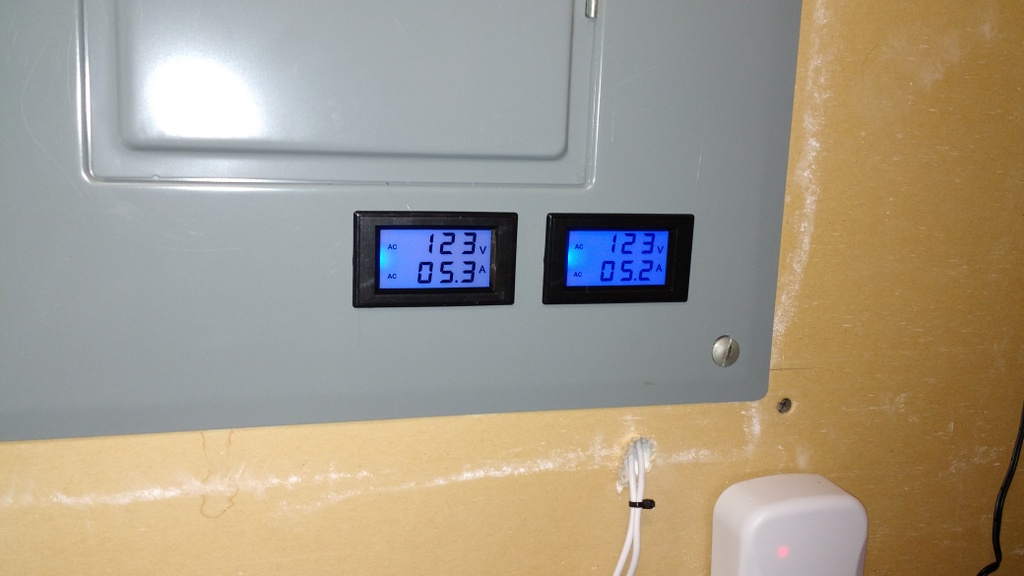
In a few more minutes my Volt was fully charged:

Success! (sorry about the dirty windshield)
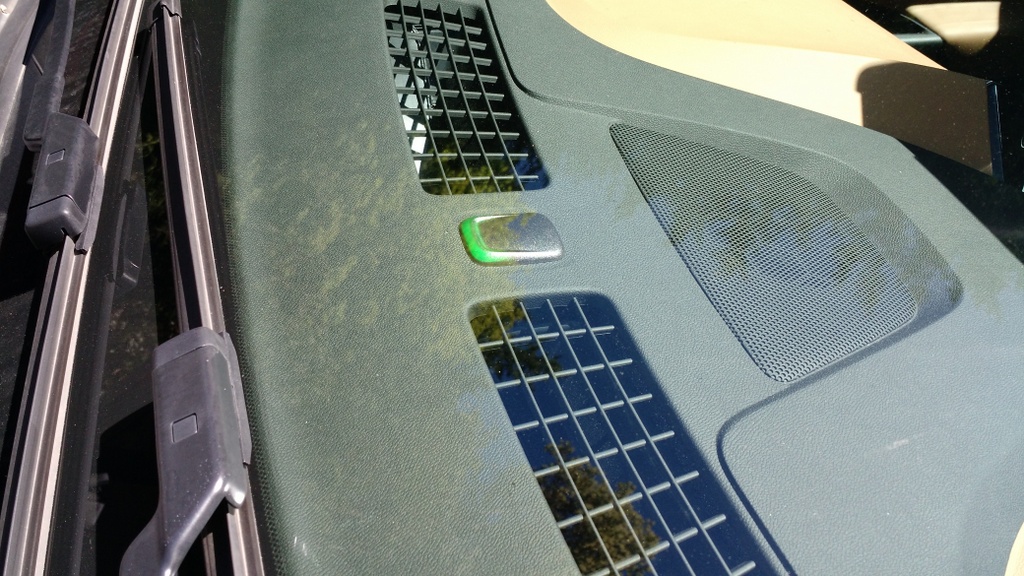
Important Note and Good News:
Unlike charging at 120 volts, at 240 volts you do NOT have to set the current rating to 12 amps in the control panel to get the fastest charging rate. Whether the setting is 8 amps or 12 amps, you will charge at 12 amps. This eliminates the bother of having to override the default setting of 8 amps.
CAUTIONARY NOTE:
If you leave this adapter plugged into a 240 volt receptacle without the EVSE attached, the adapter will appear as a 120 volt receptacle for others to use. Plugging in a 120 volt device not designed for 240 volts can cause serious problems! So it is NOT a good idea to leave this adapter plugged in while not connected for its intended use. If you think it might be possible to leave the adapter plugged in and/or there are children around who might try to use the adapter improperly, you could add a red cautionary tag for additional safety.
Feel free to email me any questions to ray@kawal.net